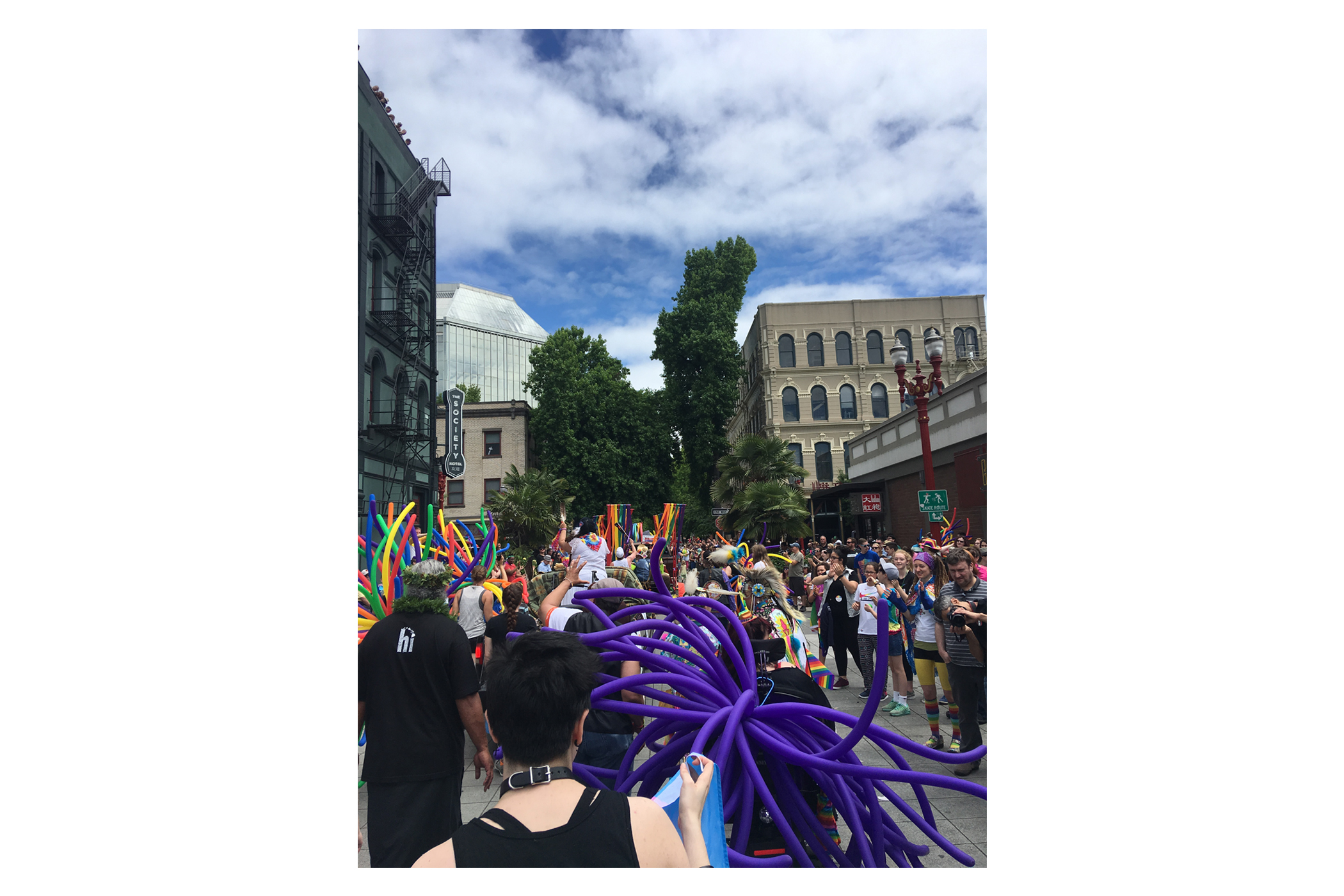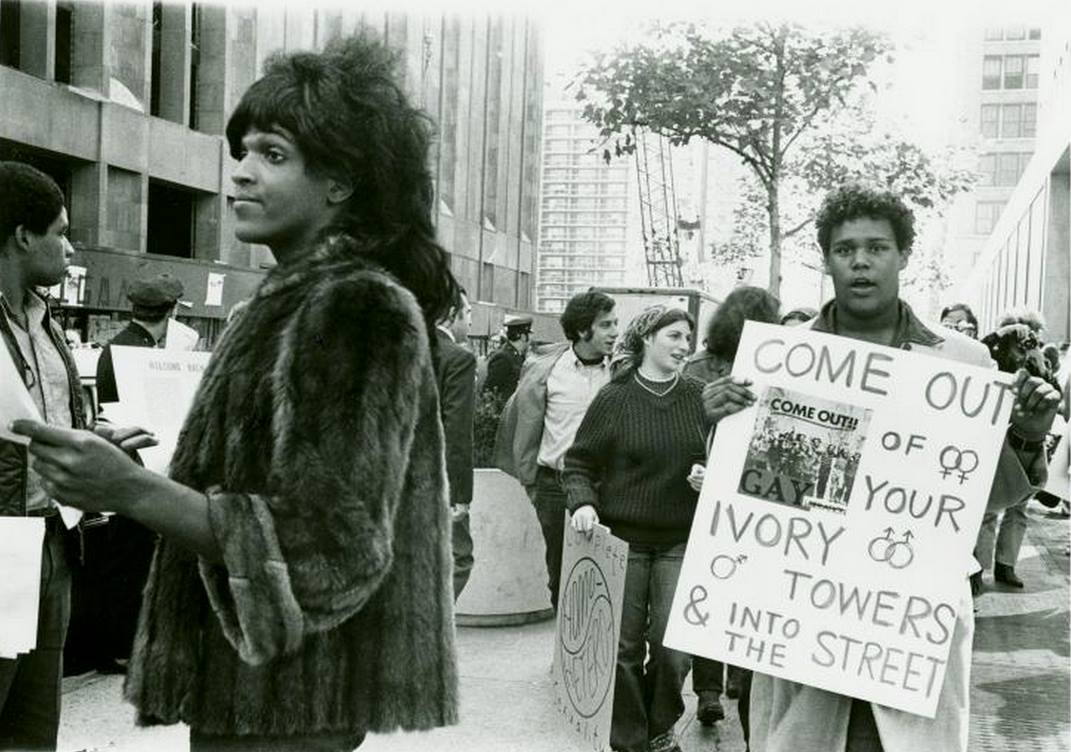You may have seen the Paz Peace banners around the Portland State campus. For some the initial meaning may be a bit of a mystery, while for others it may not to difficult to draw out the interconnected communities represented by them.
The shooting occurred just hours before the PSU graduate commencement ceremony on Sunday, June 12, and six days prior to the Portland Pride festival, a celebration of pride and diversity within the LGBTQ community.
Paz is Spanish for peace; the words in bold faced white lettering are set atop the rainbow-colored LGBTQ flag. The banners are a show of solidarity and support for the LGBTQ and Hispanic communities most heavily affected by the Orlando shooting, and they are also a call to come together as a campus.
On the afternoon of the graduation commencement, attendees shared a moment of silence for the victims of the mass shooting. Supporters held a candlelight vigil that night at the waterfront, and within four days the banners could be seen hanging around the campus.
Monday morning, one day after the attack, all staff and students at PSU received an email from the vice president of Enrollment Management and Student Affairs detailing safe places for students to talk and grieve. These included the Queer Resource Center, Women’s Resource Center and the Center for Student Health and Counseling.
Holding Space, a combined effort by the QRC and La Casa Latina on the third and fourth floors of the Smith Memorial Student Union, provided a safe environment on Monday to process what had happened and heal. There was a counselor from SHAC present, and various relaxing and releasing diversions such as Play-Doh and coloring available. Holding Space offered a sense of community to anyone wanting to drop in.
Statistics point to a stark disparity involving hate crimes and the LGBTQ community. Shortly after the shooting, Time Magazine reported on findings by the Poverty Law Center that “LGBT people accounted for 2.1 percent of the U.S. population but were the target of 17.4 percent of violent hate crimes.”
“Location matters,” said QRC Coordinator Craig Leeds. “I consider this event a hate crime because it occurred at a queer club. The fact that it was predominantly queer and trans Latinx people who were killed matters.”
Leeds uses the term Latinx as a gender-neutral form of Latino or Latina. Leeds pointed out that the attack focused on a specific community, in a much narrower act of hate and prejudice than the broad anger seen in many other acts of internal terrorism seen in the U.S.
“I think it’s both,” said Lily Harris, a PSU student who attended Pride and volunteers in the QRC. “[Terrorism is] an act that you do to make people afraid—and this made people afraid. It’s an act of hatred against the Latino community, against the queer community, and it’s a way to make people want to stay home and be afraid because of who they are.”
Dr. Carmen Saurez, Vice President of Global Diversity and Inclusion at PSU and one of the main organizers of the banner project, said hate can be the only logical way to sum up the kind of violence seen in Orlando, and in general the violence perpetrated against others seen as different.
At the June 19th Pride Parade, a small group of eight to 10 protesters, all white men, shouted obscenities and violent warnings at marchers.
Though Leeds did not witness the protesters he said that it was not unusual to have them there.
“It has been my experience that there are individuals at many Pride events who have signs and yell in protest,” Leeds said. “These demonstrators often use biblical text to make their case against the queer community. These demonstrators are often not violent, and Pride attendees simply ignore them.”
“I don’t want to say that it’s normalized, but it is kind of expected,” Harris said. “People really like to tout Portland as a progressive city, but surprise, sometimes it is really not.”
Photos of the Orlando victims were displayed on a fence on the Portland waterfront with flowers, poetry, hearts and other items people contributed, along with the sentiment “We are Orlando.” Harris noted that some people cried while others stood and observed for a while.
“It is really discouraging, because I can’t be sure that anything is going to happen—that they are going to legislate to prevent this,” Harris said. “I don’t know what they are going to do to keep this from happening again, because it can happen again.”
The banners around PSU are a sign of solidarily with those affected by the Orlando shooting in June. They were placed in recognition of what happened, and as a reminder that everyone who wants one has a place in the PSU community.
Students and administrators joined together to create and raise the banners. The Office of Global Diversity and Inclusion and the QRC were among those that participated, coordinating volunteer efforts offered by an array of PSU community members.
“The banners are meant to honor, recognize and observe the Orlando tragedy,” Leeds said.






